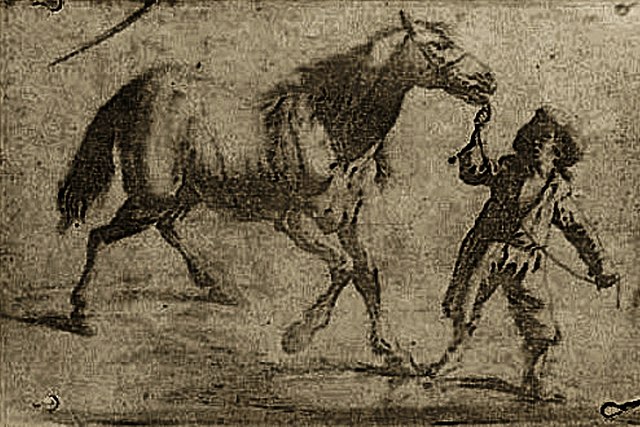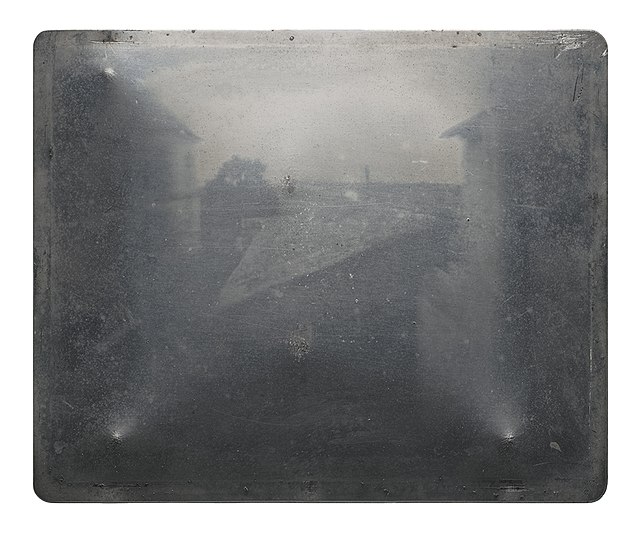Timeline of photography technology
The following list comprises significant milestones in the development of photography technology.
The oldest surviving camera photograph, by Nicéphore Niépce, 1826 or 1827
View of the Boulevard du Temple, first photograph including a person (on pavement at lower left), by Daguerre, 1838
First durable color photograph, 1861
An 1877 photographic color print on paper by Louis Ducos du Hauron. The irregular edges of the superimposed cyan, red and yellow components can be seen.
Joseph Nicéphore Niépce was a French inventor and one of the earliest pioneers of photography. Niépce developed heliography, a technique he used to create the world's oldest surviving product of a photographic process: a print made from a photoengraved printing plate in 1825. In 1826 or 1827, he used a primitive camera to produce the oldest surviving photograph of a real-world scene. Among Niépce's other inventions was the Pyréolophore, one of the world's first internal combustion engines, which he conceived, created, and developed with his older brother Claude Niépce.
Portrait circa 1820
Niépce's birthplace at Chalon-sur-Saône, with a plaque in his memory
One of the three earliest known photographic artifacts, created by Nicéphore Niépce in 1825. It is an ink-on-paper print, but the printing plate used to make it was photographically created by Niépce's heliography process. It reproduces a 17th-century Flemish engraving.
The earliest saved photographic image (Heliograph on pewter plate) from 1826 or 1827 by Joseph Nicéphore Niépce, taken at Le Gras, France.








